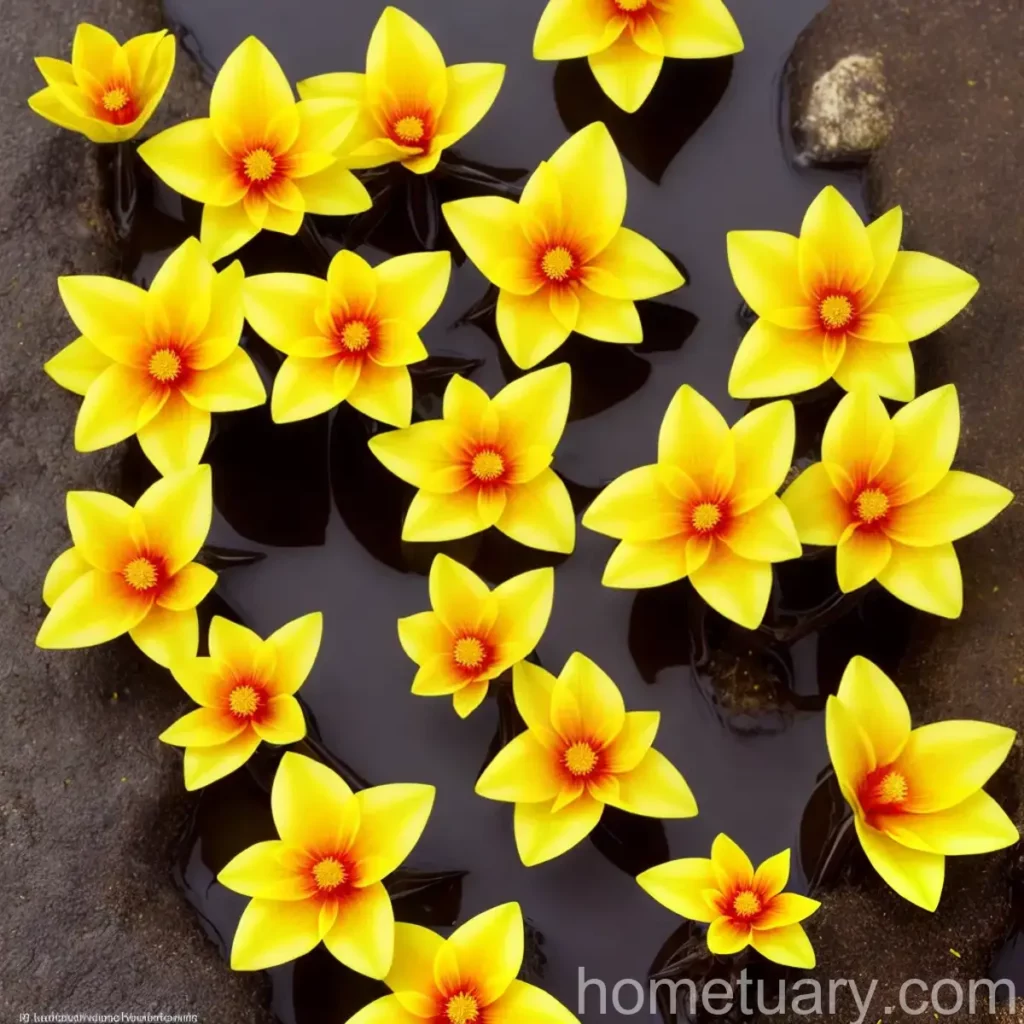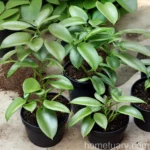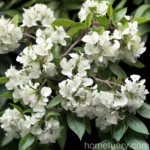Yellow Floating Heart (Nymphoides peltata)
Yellow floating heart, scientifically known as Nymphoides peltata, is an aquatic perennial plant that belongs to the Menyanthaceae family. It is also referred to as yellow water fringe, floating heart weed, and yellow aquatic herb. This beautiful plant is characterized by its mesmerizing yellow flowers and distinctive floating heart-shaped leaves, making it a popular choice for water gardens and ponds.
In this comprehensive guide, we will explore the various aspects of the yellow floating heart plant, including its culture, uses, care requirements, propagation methods, common diseases, and more. Whether you are a seasoned aquatic gardener or a beginner looking to add a unique touch to your water feature, this article will equip you with all the essential information you need to cultivate and care for the enchanting yellow floating heart.
Key Takeaways:
Before we delve into the specifics of cultivating and caring for the yellow floating heart, let’s summarize some key takeaways about this striking aquatic plant:
- Scientific Name: Nymphoides peltata
- Common Names: Yellow floating heart, yellow water fringe, floating heart weed
- Family: Menyanthaceae
- Plant Type: Aquatic perennial
- Leaves: Peltate (shield-shaped) floating leaves
- Flowers: Yellow, reminiscent of water lilies
- Suitable for: Water gardens, ponds, and aquatic containers
Now, let’s explore the different facets of the yellow floating heart plant in detail.
What is Yellow Floating Heart?
Yellow floating heart, or Nymphoides peltata, is a striking aquatic plant that is native to Europe and Asia. It is characterized by its floating heart-shaped leaves and charming yellow flowers, which impart a delightful and picturesque appeal to water gardens and ponds. As a member of the Menyanthaceae family, it is closely related to other aquatic plants such as water lilies and water fringes, sharing similar habitat preferences and growth habits.
The foliage of the yellow floating heart is visually captivating, with its shield-shaped leaves floating on the water’s surface, creating an eye-catching display. The vibrant yellow flowers are another highlight of this plant, adding a pop of color to aquatic environments. In addition to its ornamental value, the yellow floating heart also plays a crucial ecological role, providing habitat and food for various aquatic organisms.
With its resilience and adaptability, the yellow floating heart thrives in both natural water bodies and artificial aquatic setups, making it a versatile and sought-after plant among water gardening enthusiasts. Its ability to create a lush, green cover on the water’s surface makes it an ideal choice for enhancing the aesthetic appeal of ponds and water features.
Culture
Cultivating the yellow floating heart entails understanding its specific cultural requirements to ensure optimal growth and development. From water and sunlight preferences to soil conditions and fertilization needs, let’s delve into the key aspects of culture associated with this captivating aquatic plant.
Water
The yellow floating heart is an aquatic plant, meaning that it thrives in a water-based environment. When growing yellow floating heart, it is essential to provide it with the right conditions to support its aquatic nature.
Ideal Water Conditions
- Depth: Yellow floating heart flourishes in water depths ranging from 30-120 cm (12-48 inches). This range provides the plant with sufficient space to spread its floating leaves and establish a robust root system.
- Quality: The water in which yellow floating heart is grown should be clean and free from pollutants. Maintaining good water quality is crucial for the health of the plant and the organisms that inhabit the aquatic ecosystem.
- Movement: While yellow floating heart can tolerate gentle water movement, it prefers relatively calm water conditions. Avoid exposing the plant to strong currents or turbulent water, as this can damage its delicate foliage.
Sunlight
Like all plants, the yellow floating heart relies on sunlight to fuel the process of photosynthesis and produce energy. Understanding its sunlight requirements is essential for ensuring healthy growth and abundant flowering.
Sunlight Preferences
- Light Exposure: Yellow floating heart thrives in locations with ample sunlight. It is best suited to areas that receive at least 6-8 hours of direct sunlight daily. Placing the plant in a sunny spot ensures robust growth and vibrant flower production.
- Shade Tolerance: While yellow floating heart benefits from sunlight, it can also tolerate partial shade. If growing the plant in a partially shaded area, ensure that it still receives sufficient sunlight to support its growth and blooming patterns.
Fertilizer
To support the vigorous growth and blooming of the yellow floating heart, it is essential to provide appropriate fertilization. Fertilizers offer essential nutrients that may be lacking in the aquatic environment, promoting healthy foliage, vibrant flowers, and overall plant vitality.
Fertilization Guidelines
- Timing: Apply fertilizer to the yellow floating heart plant during the growing season, which typically spans from spring to early autumn. This period of active growth is when the plant can benefit most from the additional nutrients provided by fertilization.
- Fertilizer Type: Select a balanced aquatic plant fertilizer that includes essential nutrients such as nitrogen, phosphorus, and potassium. These nutrients support leaf development, flowering, and overall plant health.
Soil
While the yellow floating heart is an aquatic plant, it does not grow in traditional soil. Instead, it relies on a specialized planting medium that accommodates its aquatic growth habit and provides a suitable substrate for its roots.
Planting Medium
- Aquatic Planting Baskets: When cultivating yellow floating heart in a pond or water garden, consider using aquatic planting baskets filled with aquatic plant soil or a specialized aquatic planting medium. These baskets provide a structured environment for the plant’s roots while allowing water to circulate freely.
- Loose Substrate: In natural water bodies, the roots of the yellow floating heart anchor in loose substrates such as silt, mud, or gravel. This loose substrate allows the plant to establish a foothold while accessing nutrients dissolved in the water.
Pruning
Pruning is an essential aspect of yellow floating heart care, helping to maintain the plant’s desired shape, manage its growth, and promote healthy flowering. Proper pruning practices contribute to the overall aesthetic appeal and vitality of the plant.
Pruning Guidelines
- Remove Excess Growth: Regularly trim and remove excess foliage to prevent overcrowding and maintain an open water surface. Overcrowding can impede water circulation and create an unbalanced ecosystem in ponds and water gardens.
- Deadheading Flowers: As the yellow floating heart produces flowers, it is beneficial to deadhead spent blooms to promote continuous flowering. Removing faded flowers directs the plant’s energy towards new bud production, prolonging the blooming period.
Propagation
The propagation of the yellow floating heart allows enthusiasts to expand their collection and share the beauty of this aquatic plant with others. Propagation methods such as division and seed propagation can be employed to create new plants and sustain the presence of this captivating species.
Division
Dividing mature yellow floating heart plants is a reliable method of propagation that yields established new plants with minimal effort. It is best performed in the spring, allowing sufficient time for the divided segments to acclimate and establish themselves before the onset of winter.
Division Steps
- Select Healthy Parent Plants: Choose mature and healthy yellow floating heart plants for division, ensuring that they exhibit strong growth and abundant foliage.
- Prepare Division Segments: Carefully lift the parent plant from the water and separate it into smaller segments, ensuring that each segment possesses a healthy root system and sufficient foliage for sustained growth.
- Replant Divisions: Place the divided segments in suitable planting containers or directly into the aquatic environment, providing them with the necessary water and sunlight to facilitate rooting and new growth.
Seed Propagation
Propagating yellow floating heart from seeds allows for the creation of new genetic variations and the expansion of plant populations. Seed propagation is an engaging and rewarding method that enables enthusiasts to witness the complete life cycle of the plant, from seed germination to mature flowering.
Seed Propagation Process
- Harvesting Seeds: Collect mature seeds from the yellow floating heart plant once the seed pods have formed and dried.
- Seed Preparation: Clean and prepare the seeds for sowing, removing any debris or non-viable seeds to enhance germination rates.
- Sowing Seeds: Place the prepared seeds in a suitable germination medium, ensuring consistent moisture and warmth to support germination.
- Seedling Care: Upon germination, provide adequate light and nourishment to the seedlings to encourage healthy growth and development.
Container Popularity
The yellow floating heart is a popular choice for container gardening enthusiasts, as it lends an enchanting and graceful allure to aquatic containers and portable water features. Its compact growth habit and ornamental appeal make it an ideal candidate for container cultivation, offering versatility and visual impact in confined spaces.
Container Considerations
- Size: Select spacious aquatic containers that accommodate the spreading nature of the yellow floating heart’s foliage and root system. Ample space allows the plant to flourish and reach its full aesthetic potential.
- Compatibility: When combining the yellow floating heart with other aquatic plants in a container, consider the compatibility of species and their respective cultural requirements to ensure harmonious coexistence in the confined environment.
Common Diseases
While the yellow floating heart is generally resilient and resistant to many diseases, it can occasionally encounter issues that impact its health and vigor. Understanding the common diseases afflicting this aquatic plant enables enthusiasts to implement preventive measures and prompt interventions to safeguard its well-being.
Disease Diagnosis
- Leaf Spot: Leaf spot diseases, caused by various fungal pathogens, can manifest as discolored, necrotic spots on the foliage of the yellow floating heart. Monitor the plant for signs of leaf spot and promptly remove affected foliage to prevent the spread of the disease.
- Root Rot: Excessive moisture and poor drainage can lead to root rot in yellow floating heart plants. Symptoms include wilting, yellowing foliage, and a foul odor emanating from the roots. Address root rot by improving drainage and adjusting watering practices to promote root health.
Common Pests
Pest infestations can pose a threat to the vitality of the yellow floating heart, necessitating vigilant monitoring and proactive pest management strategies. By identifying and addressing common pests promptly, enthusiasts can protect their plants from the detrimental effects of infestations.
Pest Identification
- Aphids: These small, sap-sucking insects can colonize the foliage and stems of the yellow floating heart, causing wilting, distortion, and yellowing of the affected plant parts. Control aphids through physical removal, insecticidal soap applications, or the introduction of natural predators such as ladybugs.
- Snails and Slugs: These mollusks can feed on the tender foliage of the yellow floating heart, leaving behind extensive damage. Employ physical barriers, such as copper tape, and handpick snails and slugs to mitigate their impact on the plant.
Botanist’s Tips
For enthusiasts seeking to cultivate and care for the yellow floating heart, these botanist’s tips provide valuable insights and recommendations for maximizing the plant’s ornamental value and health.
Tips for Success
- Promote Water Circulation: Ensure adequate water circulation in ponds and water gardens to prevent stagnation and support the overall health of the aquatic ecosystem.
- Trim Excess Growth Consistently: Regularly remove excess foliage to prevent overcrowding and maintain a balanced aesthetic in aquatic environments.
- Monitor Water Quality: Regularly test and monitor the water quality to ensure it meets the optimal conditions for supporting the growth of the yellow floating heart and other aquatic organisms.
Fun Facts
- The yellow floating heart belongs to the Nymphoides genus, which comprises several species of aquatic perennials with similar growth habits and ornamental value.
- In its natural habitat, the yellow floating heart contributes to the ecological balance of water bodies by providing habitat for aquatic organisms and enhancing the visual appeal of wetland areas.
- The foliage of the yellow floating heart is often used to create intricate and visually appealing floral arrangements, adding a touch of elegance to decorative displays.
Links to External Resources
For additional information and resources on the yellow floating heart (Nymphoides peltata), refer to the following links:
- Aquatic Plant Propagation Guide
- Water Gardening Tips and Techniques
- Controlling Aquatic Weeds in Ponds
- Ecological Impact of Aquatic Plants
- Aquatic Plant Disease Management
Conclusion
In conclusion, the yellow floating heart (Nymphoides peltata) stands out as a captivating and versatile aquatic plant that enriches water gardens, ponds, and aquatic containers with its striking foliage and vibrant blooms. By understanding its culture, propagation methods, care requirements, and potential challenges, enthusiasts can cultivate and showcase the alluring beauty of this aquatic perennial.
Whether adorning a serene pond or enhancing the aesthetic appeal of a water feature, the yellow floating heart contributes to the dynamic and captivating allure of aquatic environments. With its resilience, ornamental value, and ecological significance, this mesmerizing plant continues to capture the admiration and enthusiasm of aquatic gardening enthusiasts around the world.















